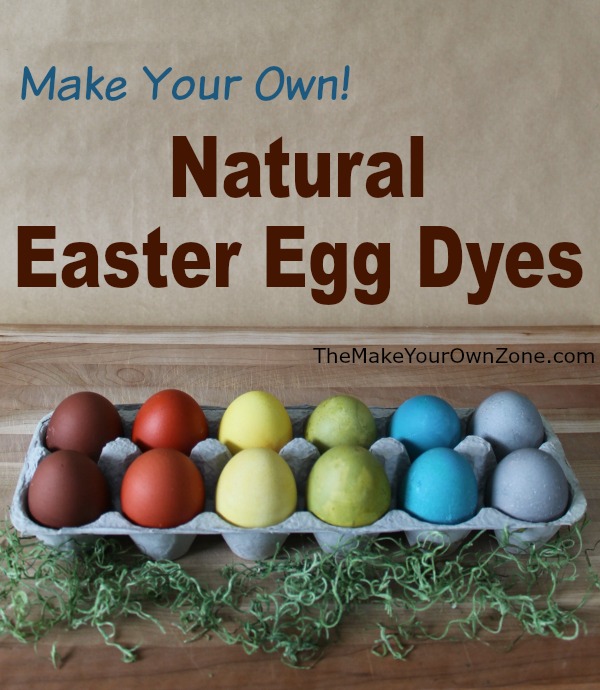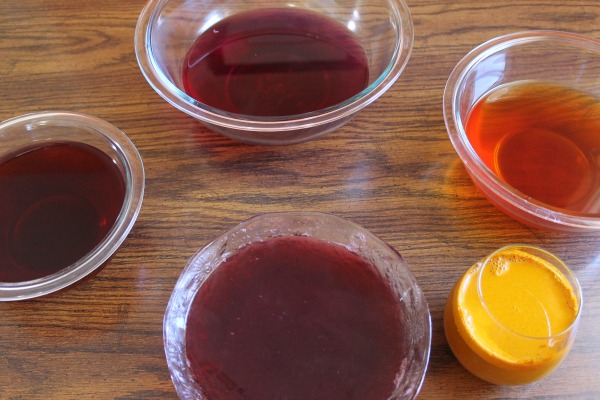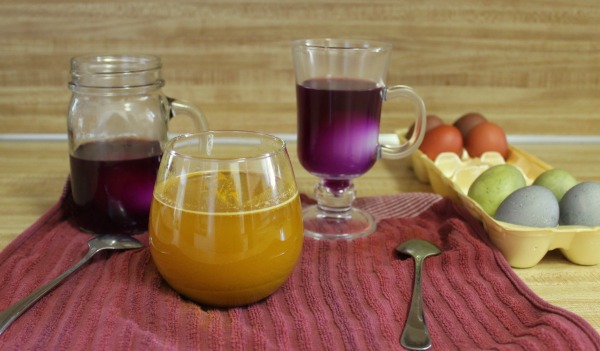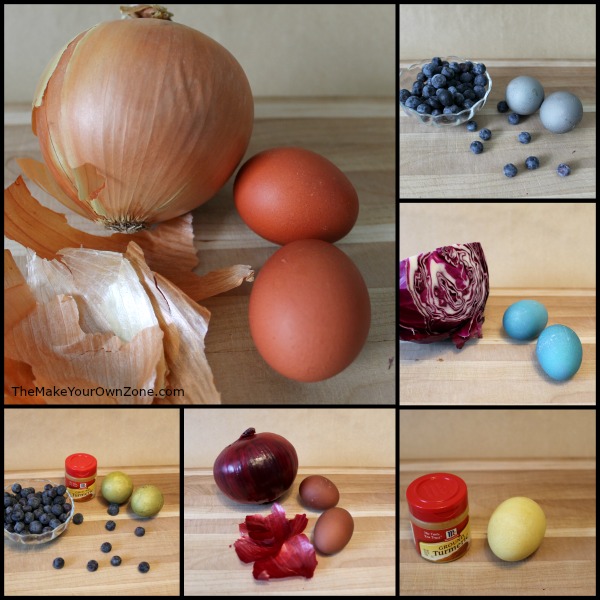How To Make Natural Easter Egg Dyes
I was reminded again this past week when I made my homemade natural Easter egg dyes, that nature isn’t about instant gratification. Things often take some tending and patience before you see the fruits of your labors. And so it is when you make your own Easter eggs dyes from food stuff. It isn’t hard or complicated, but it is a process that takes a little tending on the stove, and a little patience for some of the colors to soak into the eggs – BUT – you are then rewarded with the beautiful colors of nature in a rainbow of colors.
I’ve written about natural homemade Easter eggs dyes before, but wanted to play around with them again this year. And once again, true to nature, I got slightly different variations of colors than the last time I used this method because I wasn’t using dye from a box. Instead I was using red cabbage and onion skins and blueberries – things that nature will create as it will.
The Basic Process
When I make natural Easter egg dyes, I use a two-step process. Here’s how I do it:
For the first step, I combine 3 cups of water, 3 tablespoons of vinegar, and whatever food item I’m using to color the water (more on that below). I bring it to a boil, and then turn down the heat to low and let it simmer for 20 to 30 minutes to let the food stuff fully color the water. I then take it off the stove, strain off the colored liquid into a bowl, and discard the soggy food stuff. I let my colored dye water sit for a while to cool off (if you introduce an egg that is still a little cold to very hot water, the egg could crack).
For the second step, I take room temperature eggs and put them in a small saucepan with one of the batches of cooled off dye water I made in the first step. I bring it to a boil, and then let the eggs gently boil in the water for about 10 minutes. After that time the eggs should be hard boiled and will have taken on some color and can be removed from the water to dry.
If the egg is not colored well yet, you can transfer it to a glass or a jar with some of the dye water to let it soak a while longer (this is necessary for the blue eggs made with red cabbage that are shown soaking in the picture below).
The only exception to this two-step method is the yellow egg I made using ground turmeric. For that egg, you can simply soak a hard boiled egg in a mixture of water, vinegar, and ground turmeric for a couple hours.
You don’t necessarily have to use the 3 cup measurement I did, but I found that was a good amount to cover my eggs in my small saucepan (as opposed to the 2 cup measurement I used a few years ago when I first tried this method). The rule of thumb is use 1 tablespoon of vinegar for each cup of water you use.
Also – you could save yourself the second step and just boil the egg with the food stuff in the first step. However this will give you more of a speckled egg look as the eggs will bump up against the food stuff that they’re rolling around with in the pan.
Why Use Vinegar?
The thought behind using vinegar in the natural Easter egg dyes is that the acidic vinegar will etch and roughen up the eggshell somewhat which helps it absorb more of the dye. It’s easy to include the vinegar in the mixture so I would recommend it, but of course you could experiment without it too.
The Colors
So which foods will make which colors? Here are the ones I found give good results and let you make a nice variety of colors. I’ve also typed up a handy printable pdf document with this info too.
Here’s the link = = > > Printable pdf Natural Egg Dye Color Instructions
Red Onion Skins = Dark Red/Brownish Red
3 cups water + 3 tablespoons vinegar + a handful of red onion skins
This dye bath will result in a deeply colored egg that will range somewhere from dark red to a brownish red color.
Yellow Onion Skins = Orange or Reddish Orange
3 cups water + 3 tablespoons vinegar + a handful of yellow onion skins
This also results in a deeply colored egg that takes on pretty orange tones.
Ground Turmeric = Yellow
1 cup water + 1 tablespoon vinegar + 2 to 3 teaspoons of turmeric
Simply soak a hard boiled egg in this mixture to create a yellow egg. It could take several hours of soaking but your patience will be rewarded!
Red Cabbage = Blue
3 cups water + 3 tablespoons vinegar + chopped red cabbage (about ¼ to ½ a head)
This egg will need to soak for several hours, but you will then have magical results! The cabbage dye water looks very purple but you will not get a purple egg. Instead you end up with a beautiful egg in a lovely rich shade of blue.
Blueberries = Violet/Gray
3 cups water + 3 tablespoons vinegar + about a ½ cup of blueberries
Blueberries will give you a pretty egg with muted tones of gray and/or violet. Save the blueberry dye water when you’re done and use it to make the green eggs . . . .
Blueberries + Turmeric = Green
Blueberry dye water + 1 teaspoon turmeric
I always save my blueberry dye water after I make the violet/gray eggs. I add in a teaspoon of turmeric and boil a couple more eggs which come out green. An easy way to get some bonus green eggs without making a whole separate dye bath!
Frozen Mixed Fruit = Very Light Purple
3 cups water + 3 cups vinegar + about 1 cup frozen mixed fruit
This last egg is not pictured and was a little after-thought experiment I did because I had a tiny remainder of a bag of frozen mixed fruit in my freezer. I also admit that I forgot the vinegar in this last experiment! Nevertheless, it resulted in a very light colored lilac egg that I thought was worth mentioning too.
Here’s the handy printable again too = = > Printable pdf Natural Egg Dye Color Instructions
So there are a few ideas for you to make your own Easter egg dyes this year using natural ingredients you may already have on hand in the kitchen. The final result will be eggs in a rainbow of colors reflecting the beauty of nature.









When you peel the eggs, does the color go through and the egg itself is colored?
My recollection is a little bit of color comes through, but not much.
I have done this type of egg dying for years.. but I peel my eggs.. dye them and then cut them in half and make Deviled eggs.. they look so pretty on the Easter Buffet table.. I actually have to tell people they are eatable…
I had never thought of that, but it sounds like a fun way to make your deviled eggs!
Your colored eggs are really beautiful. I love how dark and others are bright. I was wondering if you have ever tried using fresh beet water after they are cooked. I have not done that yet, but will in the future.
I have not tried beets yet, but someone else left a comment on another site that beet water with brown eggs makes lovely deep purple eggs. I will have to remember that!